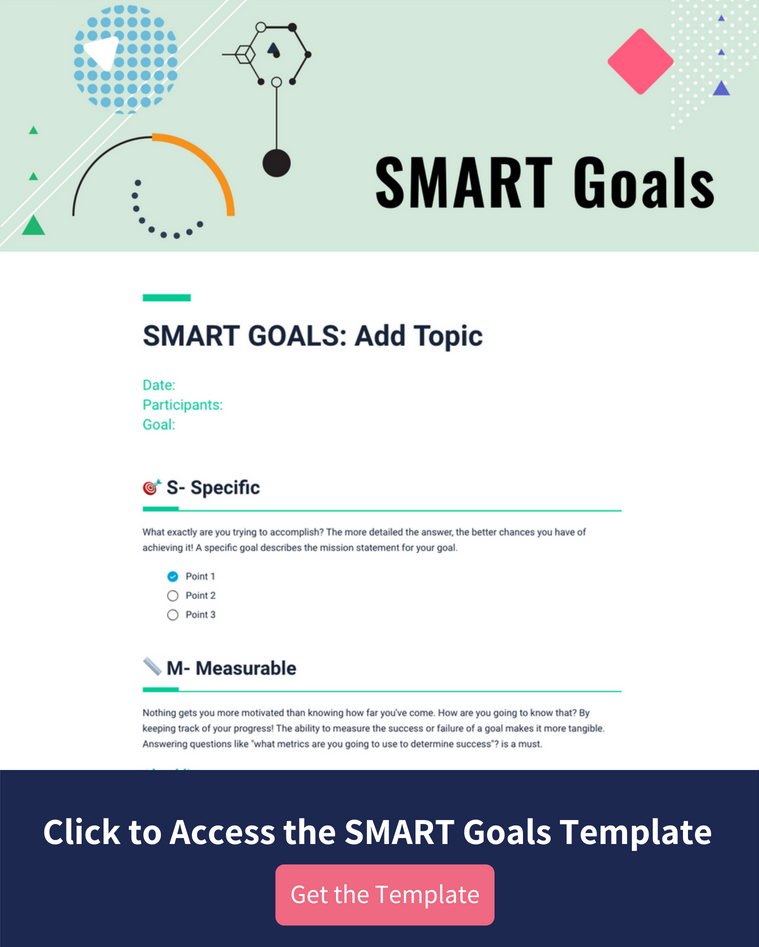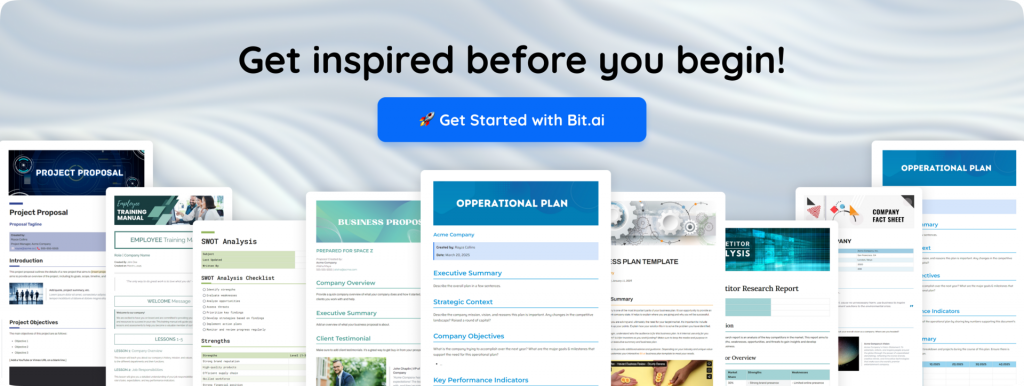Hey there, fellow goal-getters! Did you know that the word “SMART” can be used as an acronym for setting professional goals? No, I’m not talking about making your goals intelligent (although that would be pretty cool). Instead, SMART stands for Specific, Measurable, Achievable, Relevant, and Time-bound.
Setting SMART goals is important for professionals because it allows them to define their objectives clearly, track their progress, and hold themselves accountable. Also, achieving your goals can feel highly satisfying.
But enough with the serious stuff, let’s get creative with some examples of professional SMART goals! Want to improve your time management skills? Set a goal to “Slay my to-do list by 2 pm every day, and reward myself with a 20-minute dance party.” Want to improve your public speaking abilities? Set a goal to “Conquer my fear of public speaking by presenting at least one virtual conference and not passing out (bonus points if I get a standing ovation).”
So, if you want to level up your professional game, buckle up and read on for some inspiring examples of SMART goals that will have you saying “I can achieve anything.”
What are Professional SMART Goals?
Are you tired of setting goals that are as vague as a cloudy day in Seattle? Well, worry not, because we’re here to talk about something called SMART goals! Now, before you go thinking that we’re talking about goals that are smarter than you (which may or may not be the case), let’s dive into what they actually are.
SMART is an acronym that stands for Specific, Measurable, Achievable, Relevant, and Time-bound. So, let’s break it down. When we say specific, we mean that your goal should be clear and well-defined. For example, instead of saying, “I want to be successful,” a specific goal would be, “I want to become the top-performing salesperson in my company.”
The next letter, M, stands for measurable. This means that you should have a way to track your progress towards achieving your goal. For example, if your goal is to increase your monthly sales by 20%, you can track your progress by checking your monthly sales reports.
Moving on to A, which stands for achievable. Your goal should be realistic and attainable. It’s great to aim high, but if your goal is completely unrealistic, you’re just setting yourself up for failure. For instance, if you’re a beginner in running, setting a goal of running a marathon within a month is not achievable.
R stands for relevant. Your goal should be relevant to your personal or professional growth. For example, if you’re in marketing, a relevant goal would be to increase engagement on your company’s social media pages.
Lastly, T stands for time-bound. This means that your goal should have a deadline. Without a deadline, it’s easy to keep putting off your goal and never actually achieve it. For example, instead of saying, “I want to write a book someday,” a time-bound goal would be, “I want to finish writing my book by December 31, 2025.”
Did you know that according to a study by Harvard Business School, only 3% of MBA graduates had written goals and plans, and that 3% ended up earning 10 times more than the other 97% put together?
So, now that you know what SMART goals are, you might be wondering why you should set them for work. Well, don’t worry, my friends, because we’re going to dive into that topic in the next section. Stay tuned!
Why Set Goals for Work?
Do you know that the average person spends about 90,000 hours at work over their lifetime? That’s a lot of time to spend without direction or purpose, don’t you think? That’s why it’s important to set goals for work!
Setting goals for work is like giving yourself a roadmap to success. Without a plan, you might find yourself lost in a sea of tasks and deadlines. But with a plan, you can prioritize your tasks, track your progress, and achieve your career aspirations.
Now, I know what you’re thinking: “Setting goals sounds like a lot of work.” And it can be, but the benefits are well worth it. By setting goals, you can:
- Increase productivity
- Boost motivation
- Improve job satisfaction
- Enhance career growth
And more!
The best part is that setting professional goals doesn’t have to be boring or mundane. You can make it fun and creative by using the professional SMART goal framework.
Let me give you an example. Say your goal is to get a promotion at work. Instead of saying, “I want to get a promotion,” you could make it a SMART goal by saying, “I want to earn a promotion to Senior Account Executive within the next 12 months by exceeding my sales quota by 15% and completing a leadership training course.”
See what happened? By using the SMART framework, you’ve given yourself a clear and specific goal that’s measurable, achievable, relevant to your career, and has a set deadline.
Stay tuned for the next section, where we’ll give you 10 examples of professional SMART goals that you must set.
10 Examples of Professional SMART Goals
Are you ready to take your career to the next level in 2025? Well, get ready to break out your SMART goals because we’ve got 10 examples that will help you enhance your professional skills, increase your productivity, and achieve your career aspirations.
1. Enhance Your Ability to Communicate With The Public
Effective communication is the cornerstone of success in any career. Whether you’re a salesperson, manager, or customer service representative, being able to clearly convey your message is crucial. To enhance your ability to communicate with the public, consider taking a public speaking course, participating in a Toastmasters group, or even practicing your elevator pitch with a friend.
Read More: Communicate Effectively: How to Do It in The Workplace!
2. Investigate Other Departments Within The Organization
Have you ever wondered what it would be like to work in a different department within your organization? Not only can this provide valuable insight into other areas of the company, but it can also help you discover new skills and passions. Set a SMART goal to investigate one or two other departments in your organization by taking help from an employee or attending a meeting.
Read more: What is Strategic Planning & Everything You Need To Know!
3. Expand Your Professional Connections
It’s not just what you know, it’s who you know. Building a strong professional network can open doors to new opportunities and help you stay up-to-date with industry trends. A professional goal to attend at least one networking event per quarter or connect with five new people on LinkedIn each month may help. According to a survey by LinkedIn, 85% of jobs are filled through networking.
4. Conduct a Thorough Analysis of a Competitor
To stay ahead of the competition, it’s important to know what they’re up to. Set a goal to conduct a thorough analysis of one of your main competitors, including their strengths, weaknesses, and marketing strategies. Use this information to improve your own business strategy and gain a competitive edge.
5. Enhance Your Ability to Manage Time Effectively
Time is a precious commodity, especially in the workplace. Improve your time management capabilities by setting a SMART goal to prioritize your tasks and delegate responsibilities when necessary. Use tools like the Pomodoro technique or time-tracking apps to help you stay on track.
6. Elevate Your Leadership Skills
Whether you’re a manager or an individual contributor, having strong leadership skills is crucial for success. Set a SMART goal to attend a leadership training program, take on a mentorship role, or even start a book club with colleagues to discuss leadership principles.
7. Acquire Knowledge of a New Tool or Technology
In today’s fast-paced business environment, staying up-to-date with the latest tools and technologies is essential. A professional SMART goal to learn a new tool or technology can benefit your career, such as a project management software or data analytics platform. This will help you become a more versatile and valuable employee.
8. Balance Your Professional and Personal Life
Maintaining a healthy work-life balance can improve your overall well-being and productivity. Decide to leave work on time at least three days a week, take a lunch break every day, or even schedule regular self-care activities like exercise or meditation.
9. Improve Collaboration and Communication Among Team Members
Teamwork makes the dream work, but it can be challenging when communication and collaboration break down. This year, decided to improve collaboration and communication among team members by holding regular team meetings, using a collaboration tool like Bit.ai or Slack, or even organizing team-building activities.
10. Seek Out New Opportunities and Challenges Within Your Position
It’s easy to get stuck in a rut in your current role, but there are always opportunities for growth and development. Set a SMART goal to seek out new challenges within your position, such as taking on a new project, volunteering for a cross-functional team, or even pitching a new business idea to your boss.
Did you know that people who write down their goals are 42% more likely to achieve them? So, whether you want to improve your communication skills, expand your professional network, or seek out new challenges, there’s a SMART goal that can help you get there.
And, if you’re looking for a tool to help you set and track your professional SMART goals, check out Bit.ai. With its intuitive interface and collaborative features, Bit.ai makes it easy to create and share SMART goals with your team. Read more about it in the next section.
Set Professional SMART Goals With Bit.ai

Bit.ai’s SMART goals template is a game-changer for anyone looking to take their productivity to the next level. With the SMART framework built right in, you can set goals that are Specific, Measurable, Achievable, Relevant, and Time-bound. Plus, with features like real-time collaboration, and easy sharing, you can ensure that everyone on your team is on the same page and working towards the same goals.
But that’s not all! With Bit.ai, you can also create interactive and visually stunning documents that will keep you and your team engaged and motivated. With the ability to integrate with over 100 different apps, you can make sure that your SMART goals are aligned with your overall business strategy.
So, what are you waiting for? Start making SMART goals in Bit.ai today and watch your productivity soar! And speaking of soaring, stay tuned for the next section where we’ll summarize the benefits of using Bit.ai’s SMART goals template and give you some final thoughts on how to take your productivity to the next level.
Conclusion
Congratulations, my dear goal-setters! You’ve made it to the end of our discussion on professional SMART goals. From honing your skills and expanding your network to fostering inclusivity and achieving work-life balance, we’ve covered a lot of ground.
Now, it’s time to put all this knowledge into action. Lucky for you, Bit.ai’s SMART goals template is here to help you achieve all your professional aspirations. With its intuitive design and powerful features, you can start setting and tracking your goals in no time. So, what are you waiting for? Let’s get started!
Remember, setting SMART goals is not just a one-time activity, it’s a mindset. Keep challenging yourself, stay focused, and, most importantly, don’t forget to celebrate your wins along the way. And with that, I leave you with this final thought: “Dream big, set SMART goals, and crush them with Bit.ai!”
Further Reads:
- 10 SMART Goals Examples For New Managers & Leaders!
- Goal Setting for 2026: The Ultimate Process for Self Improvement!
- SMART Marketing Objectives: What are they & How to Write them?
- 13 Business Goals You Must Set In 2026!



